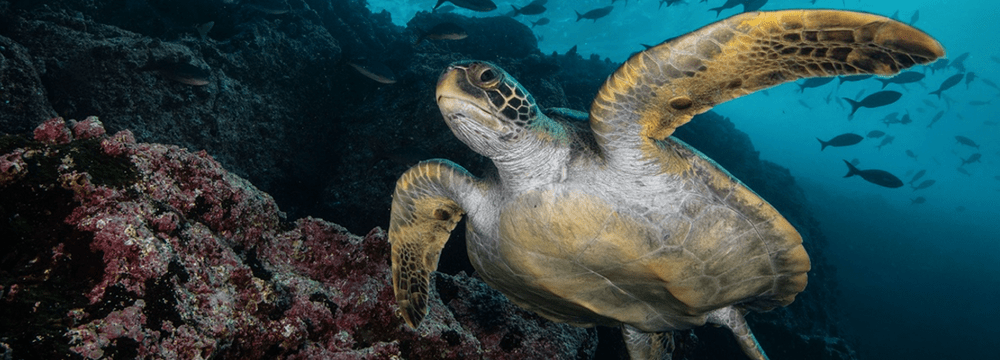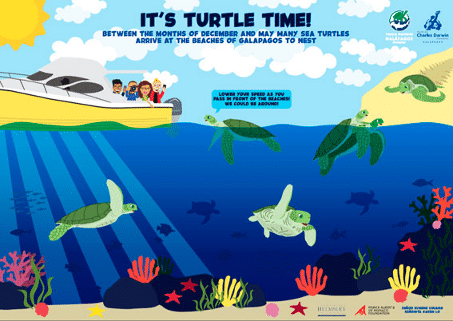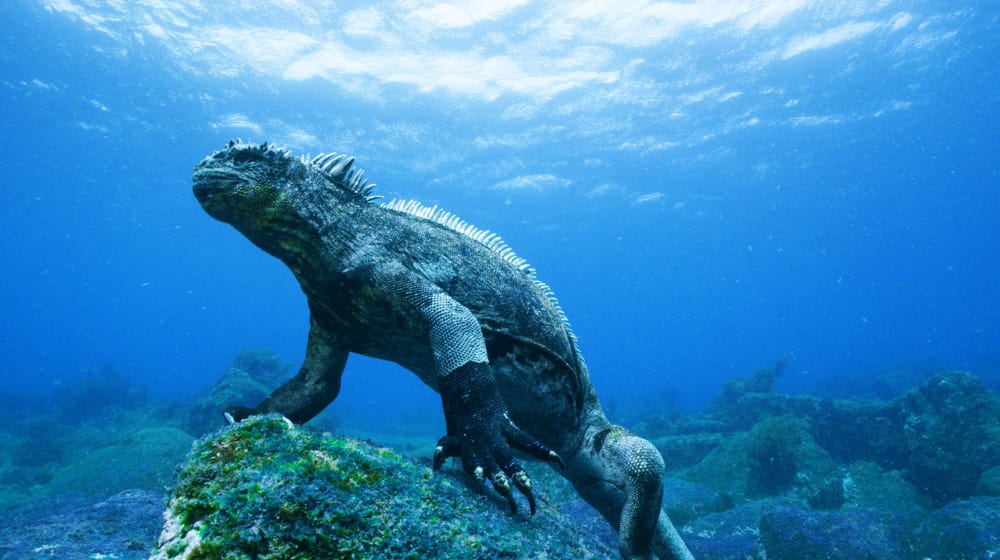
the fascinating life of green sea turtles (Chelonia mydas) in the Galapagos Marine Reserve
Scientists at the Charles Darwin Research Station (CDF) are working on a project to reduce the danger to green sea turtles from boat collisions in the Galapagos Marine Reserve. As part of the research, GoPro cameras were attached to several female sea turtles in January 2020 to better observe their behavior in the ocean.
The devices recorded for several hours and allowed the natural behavior of the turtles to be studied. The researchers were able to observe interesting behaviour patterns. There were also beautiful pictures of the animals' daily routine with, sleeping and swimming, the interaction between the turtles, encounters with other animals and their encounters with boats.
Here you can find the links to the most beautiful pictures and experiences taken by one of the "camera sea turtles":
The delivery of a total of 141 eggs in about three hours marked the end of their breeding season. Equipped with a GoPro, she returned safely to the sea. The next day, the camera filmed from 07:00 to 18:00 hours in intervals of 10 minutes, making a total of 5 hours of footage. During the first day of surveillance, the sea turtle spent about 3 hours of the entire recording time sleeping and resting on the sandy seabed.
Sea turtles have the incredible ability to hold their breath underwater for long periods of time, which helps them make deep dives. These can last up to an hour or more when the turtles are completely still. Conversely, they need to surface and breathe more often when swimming or feeding. During the second day of recording our turtle was more active, and during the 3 hours of recording, we saw them emerge and breathe 70 times.
Sea turtles are not social animals. Adult turtles do not know or care for their offspring, they do not form groups to migrate and they do not interact with each other, even when they are at a popular feeding site in coastal areas where they encounter many turtles. Only during the mating season do males and females often interact with each other. Our turtle visited places near her nesting beach where she met other turtles and even saw some males approaching and trying to mate.
During their long-life green turtles use a variety of habitats. Adult turtles spend most of their time in shallow coastal areas where they are close to their favourite food, green algae. This means that they have to share this habitat with other marine animals such as fish, sea lions and reef sharks. Thanks to the GoPro we installed on our female turtle, we were able to observe her in the different habitats she visited and see the variety of "neighbors" with whom she lived peacefully.
Sea turtles often come to the sea surface. Not only do they breathe, but they often spend some time at the surface to "sunbathe" because they cannot regulate their body temperature. In this way they raise their temperature and warm themselves up, so to speak. It also often happens that they can be observed mating on the surface during their nesting season. Of course, it is also possible that the turtles only want to orient themselves on the surface. Our observed turtle was recorded several times when she was at the surface, resting, "sunbathing" and surprisingly mating.
Green turtles are generally herbivores. Adult animals feed mainly on seaweed and algae. Their jaws are lined with a broad beak, which helps to tear off or scrape off vegetation. This food gives the turtles their green colour and thus their name. However, the young turtles have a more varied diet and eat crabs, sponges and jellyfish. Here you can see a green turtle feeding on the reef near Darwin Island.
Scientific studies (2013) have already found that about 12% of the green sea turtles that nested on Quinta Playa had injuries caused by collisions with boats. This is due to the fact that many sea turtle habitats are located near areas with heavy boat traffic. Las Bachas beach, from where our turtle was monitored, is also located in an area with heavy boat traffic. This is mainly due to tourism. During the surveillance, our turtle was seen several times near boats.
or this reason, an important message to all boats and ships:
Near beaches and other areas where sea turtles are found, it is important to drive slowly, otherwise the animals could be injured.
The CDF is heavily involved in the areas of education and public relations. As part of its work, it has developed various materials on this subject. Here is an example of a poster that was recently produced and distributed to communities in the Galapagos Islands to raise awareness of sea turtles.

Sea Turtle Poster. © Leanne Berry, CDF.
